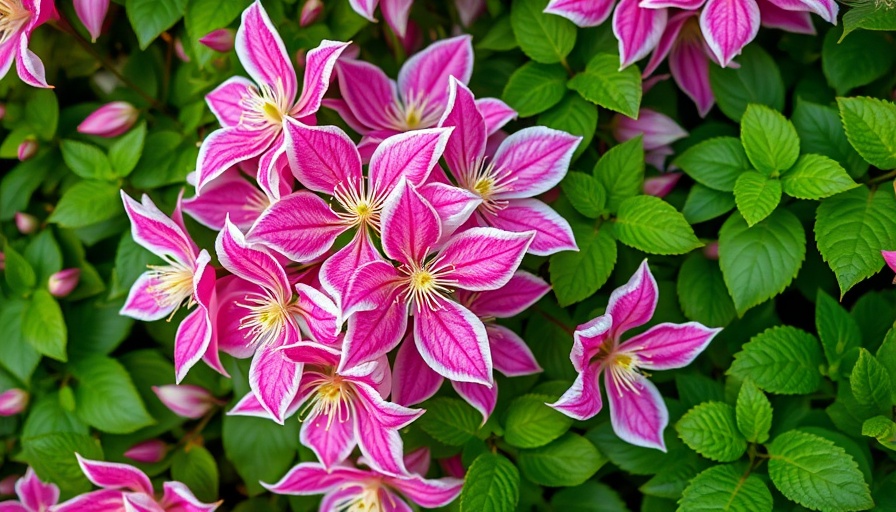
Discovering the Beauty of Clematis: A Gardener's Guide
Clematis are beloved for their stunning flowers that come in an array of colors and shapes, ranging from delicate bell-like blooms to bold starburst varieties. These versatile flowering vines cater to diverse gardening styles and climates, making them a fantastic addition to any flower garden.
Understanding Clematis Classification Groups
Classifying clematis can be as intricate as the flowers themselves. They belong to one of several distinctive groups based on specific traits like bloom time and pruning requirements. The three main groups can be summarized simply as:
- Group 1: Early bloomers that flower in spring on old wood.
- Group 2: Repeat bloomers that tend to produce flowers in both spring and again later in the summer.
- Group 3: Summer bloomers that thrive on new wood growth and usually need to be pruned more aggressively.
Understanding these groups is crucial for successful plant care, as incorrect pruning can lead to a significant loss of blossoms.
The Different Types of Clematis: A Closer Look
The Clematis genus includes around 300 species and numerous hybrids, serving various aesthetic and functional purposes in landscaping and gardening projects. For instance:
- C. jackmanii: Known for its vigorous growth and large flowers, ideal for covering fences.
- C. integrifolia: A herbaceous variant that dies back in winter, making it a great choice for seasonal interest.
- C. armandii: An evergreen option, perfect for milder climates.
Whether you desire sprawling vines to drape over structures or compact ground covers to add dimension, clematis offers something for every gardener.
Clematis Care: Cultivating Gorgeous Blooms
To enjoy a flourishing display of clematis flowers, it’s essential to give them the right conditions. Here are some effective plant care tips:
- Keep roots cool: Consider using mulch to regulate soil temperature.
- Provide sunlight: Position your clematis so the foliage is upright in the sun while keeping roots shaded.
- Prune according to their group: Understand the right techniques to promote health and blooming.
By following these guidelines, your clematis will reward you with a summer filled with vibrant colors and captivating scents.
Common Misconceptions About Clematis
When it comes to cultivating clematis, several myths can lead gardeners astray:
- Myth: All clematis can be treated the same way.
- Reality: Each group requires different care, so knowing which type you have is vital.
- Myth: Clematis are invasive and overwhelm landscapes.
- Reality: While some types can be aggressive, proper management and selection will keep them in check.
Identifying your clematis type and dispelling these misconceptions will empower you to create harmonious floral displays in your garden.
Enhancing Your Garden Design with Clematis
Integrating clematis into your landscaping opens up abundant opportunities for beautiful vertical gardening and breathtaking flower displays. Consider some of these creative ways to include them:
- Trellises and Arbors: Use their climbing nature to add height to garden decor.
- Container Gardening: Grow clematis in pots for added flexibility in garden design.
- Garden Borders: Pair them with other perennials for a diverse flower bed with varying heights and colors.
These ideas will not only enhance your garden’s visual appeal but will also create inviting outdoor spaces.
Your Clematis Journey: From Identification to Blooming Beauty
Identifying the type of clematis you own is the first step towards effectively nurturing these beautiful vines. With their wide range of species and hybrid varieties, there's a clematis suited for every gardener’s vision. Now that you have the knowledge and tools to care for your plants, it’s time to embrace the beauty of clematis in your gardening adventures!
 Add Row
Add Row  Add
Add 




Write A Comment